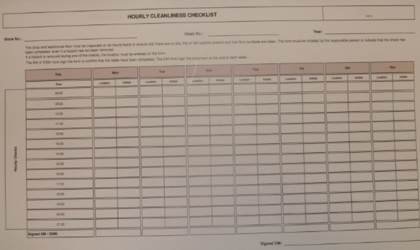Detect Spills to Control Slips (Trips and Falls)
- In a New Scientist article, half of workers believed it’s company’s responsibility (not theirs) to prevent slips and trips. It's important to make employees aware of their responsibility to take reasonable care of them self and others, co-operate with the employer and report dangers under Section 13 of the 2005 Act.
- Monitor on a frequent, regular, planned basis.
- Include identified spill risk areas
- Monitoring at entrances may need to be increased during wet weather
- Consider using a checklist if necessary. Record-keeping can help ensure monitoring takes place

- Consider nominating one person to be responsible to monitor for spills
- Measures to increase the likelihood that pedestrians will see a fluid contamination on a floor are not generally reliable enough
- The visibility of a fluid is dependent on numerous factors, non-more so than the observer looking in the right direction
- Actions which may increase the visibility of a fluid spill on a floor include:
- increasing ambient lighting, especially around entrances
- cordoning or markers at edges of wet area
- floors with high luminance contrast against foreseeable spills/fluids, e.g. porous flooring which darkens when wet
- colour contrast between flooring and likely fluid contaminants, such as cleaning products
Spill risks are an important part of Slip Risk Assessment and Prevention
A risk assessment approach to Spills slips (trips and falls) can include the following steps
- Identify Risks
- Prevent
- Contain
- Detect
- Cordon
- Remove
